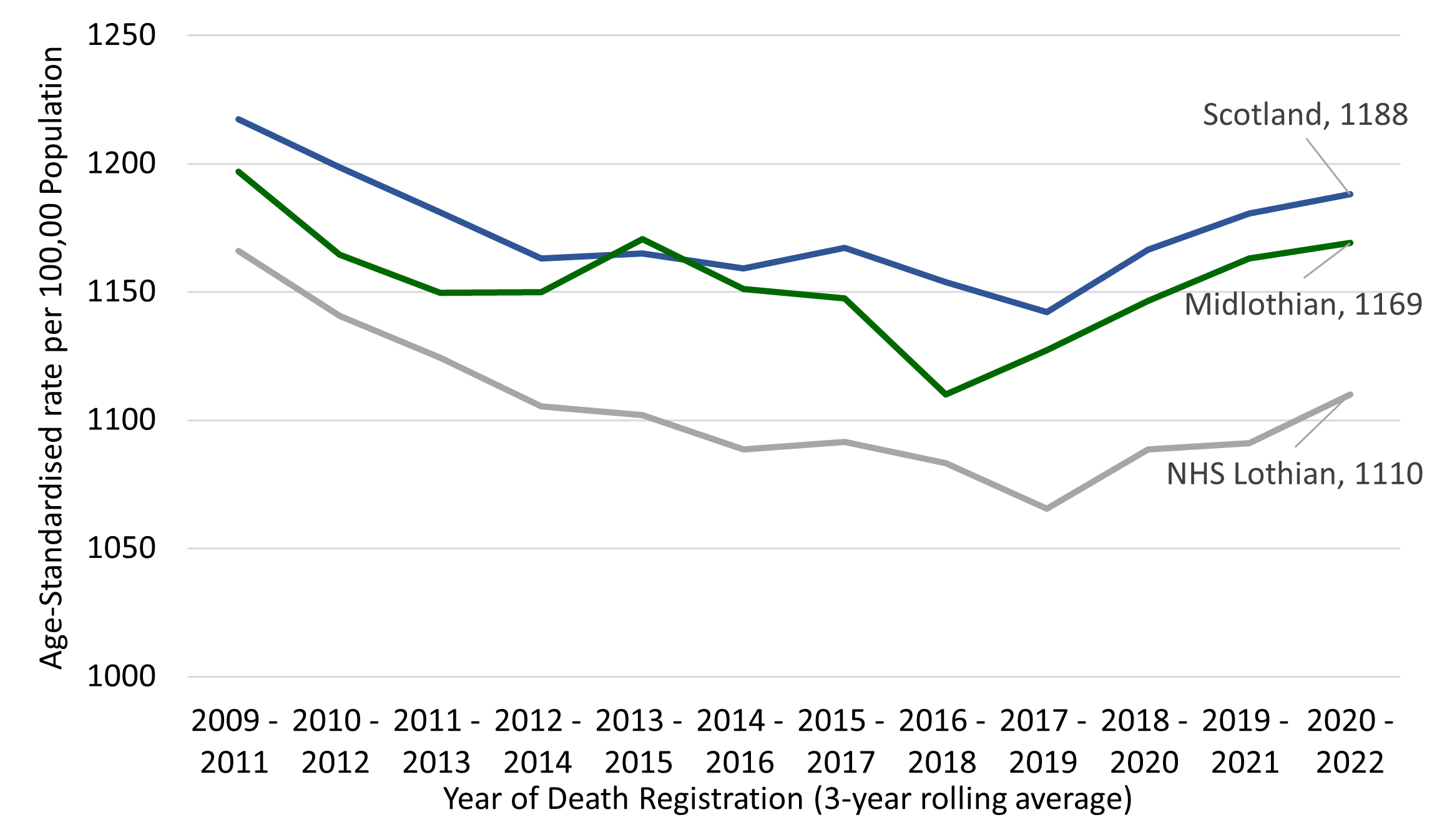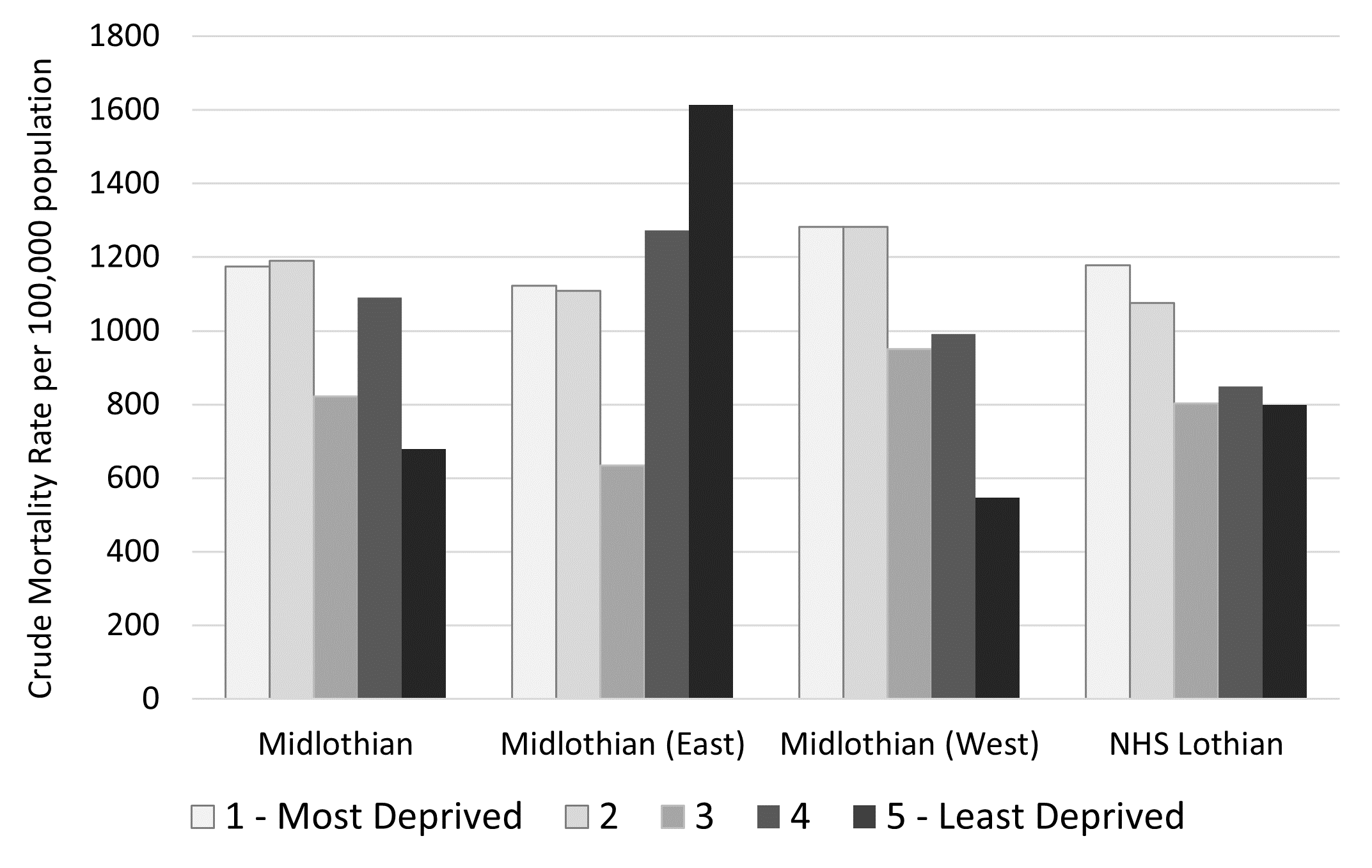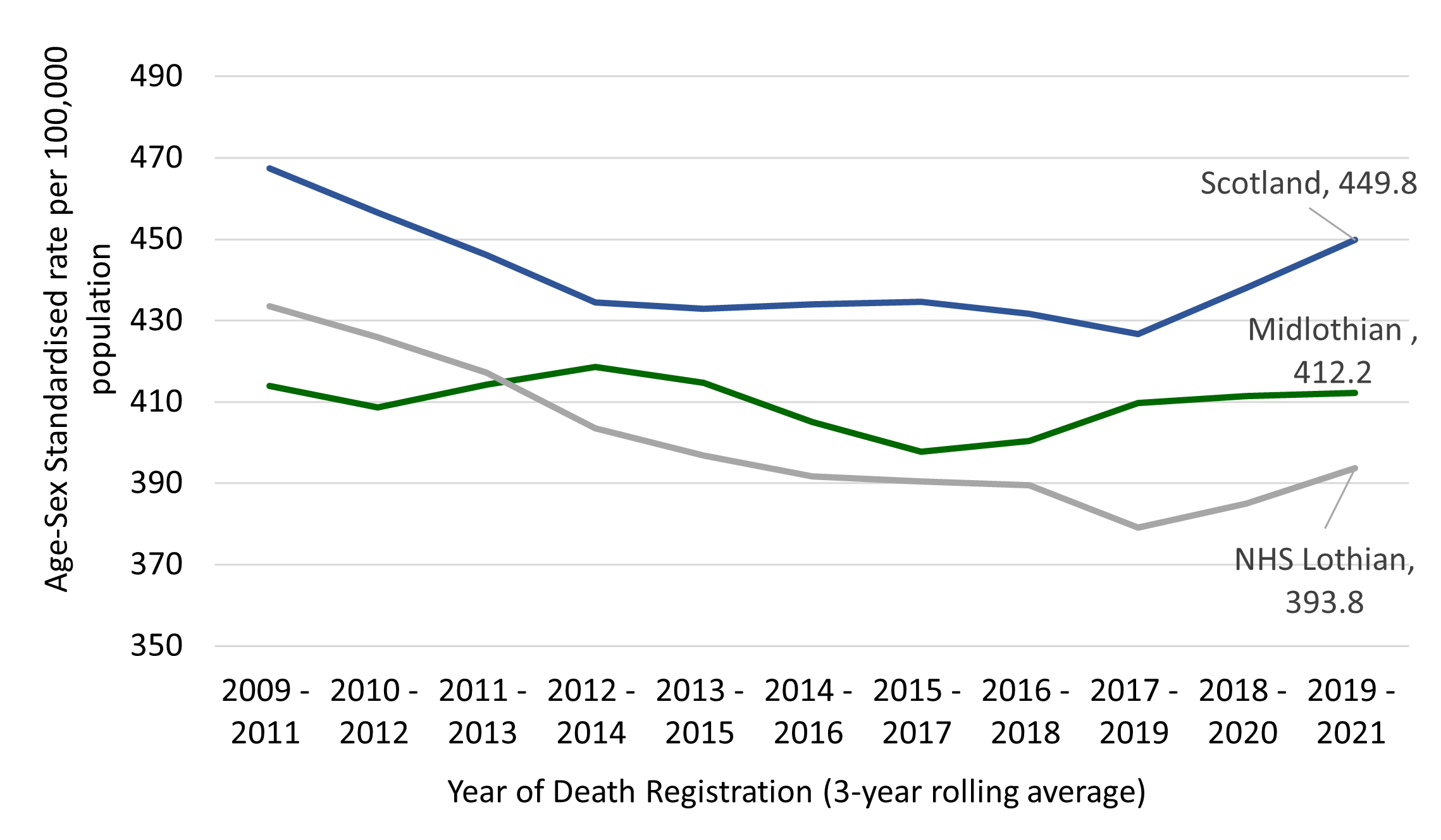Mortality
It is important to monitor the number of deaths (mortality) observed over a specified time. These are best compared as rates per 100,000 population, standardised to take account of differences in the structure of the population so that we are comparing like with like. For instance, one area might have a lower death rate than another simply because the proportion of younger people living there is higher than the second area. Standardisation takes account of these differences between areas.
All Cause Mortality, Midlothian, NHS Lothian and Scotland
Data source: National Records of Scotland

We expect to see a relationship between the relative socioeconomic deprivation of an area and the mortality rate, with the most deprived areas having the highest mortality rate. This relationship is found in Midlothian. When Midlothian is broken down into two localities the numbers that underpin the rates are small and so subject to much greater variation. The higher-than-expected mortality rates in Midlothian East in SIMD 4 and 5 for instance may be due to influences such as the location of care homes.
All Cause Mortality by SIMD 2020, Crude Rate per 100,000 population, 2022
Data source: Public Health Scotland & National Records Scotland

Early deaths (premature mortality)
If someone dies aged 75 or less, this is considered to be an early or premature death and potentially preventable. Early mortality rates are the number of deaths of people under 75 observed over a specified time. These are a subset of the overall death rate. These are best compared as rates per 100,000 population, standardised to take account of differences in the structure of the populations being compared.
Early (<75) All Cause Mortality, Midlothian, NHS Lothian and Scotland 2022
Data source: National Records of Scotland

From 2009 to 2011 there were 893 early deaths in Midlothian and from, 2020 to 2022 there were 1,081. Since there are smaller numbers of deaths in this age group it is reasonable to expect some variation in mortality rates between years.
Avoidable Mortality
Avoidable Mortality is deaths which are considered either preventable or treatable through public health interventions or timely and effective healthcare. It is based on an international definition by the OECD/Eurostat and looks only at deaths under the age of 75 (National Records Scotland, 2023). Midlothian has the second highest avoidable mortality rate in the Lothians, with West Lothian being the highest and East Lothian being the lowest.
Avoidable Mortality rates by Council, All persons 2019-2021 Average
Data source: National Records Scotland

Page updated: May 2024.
